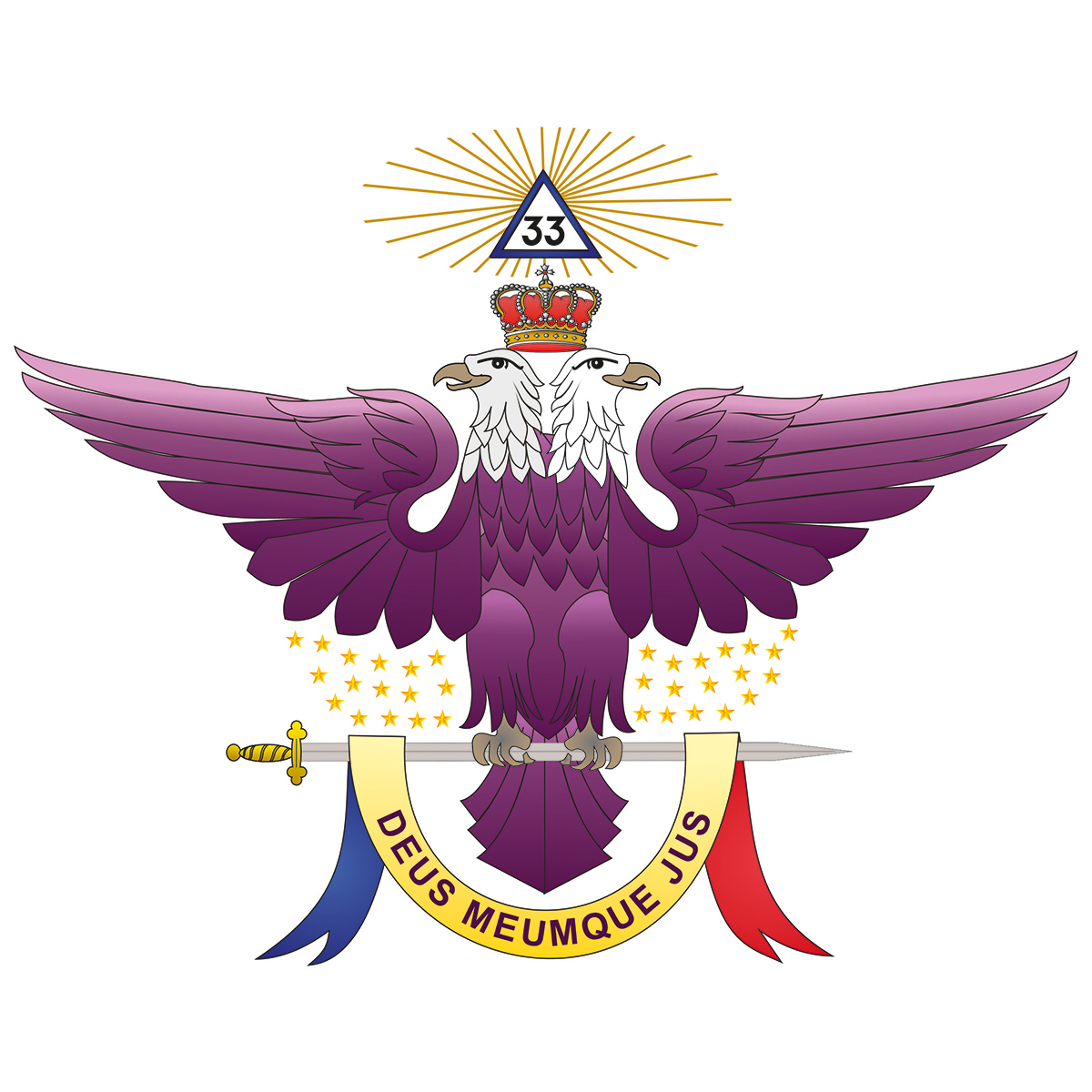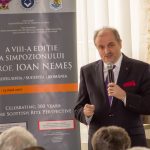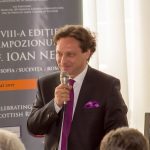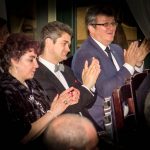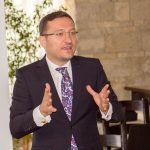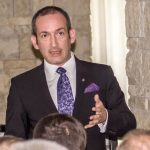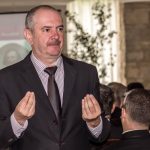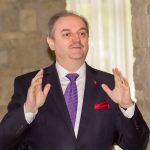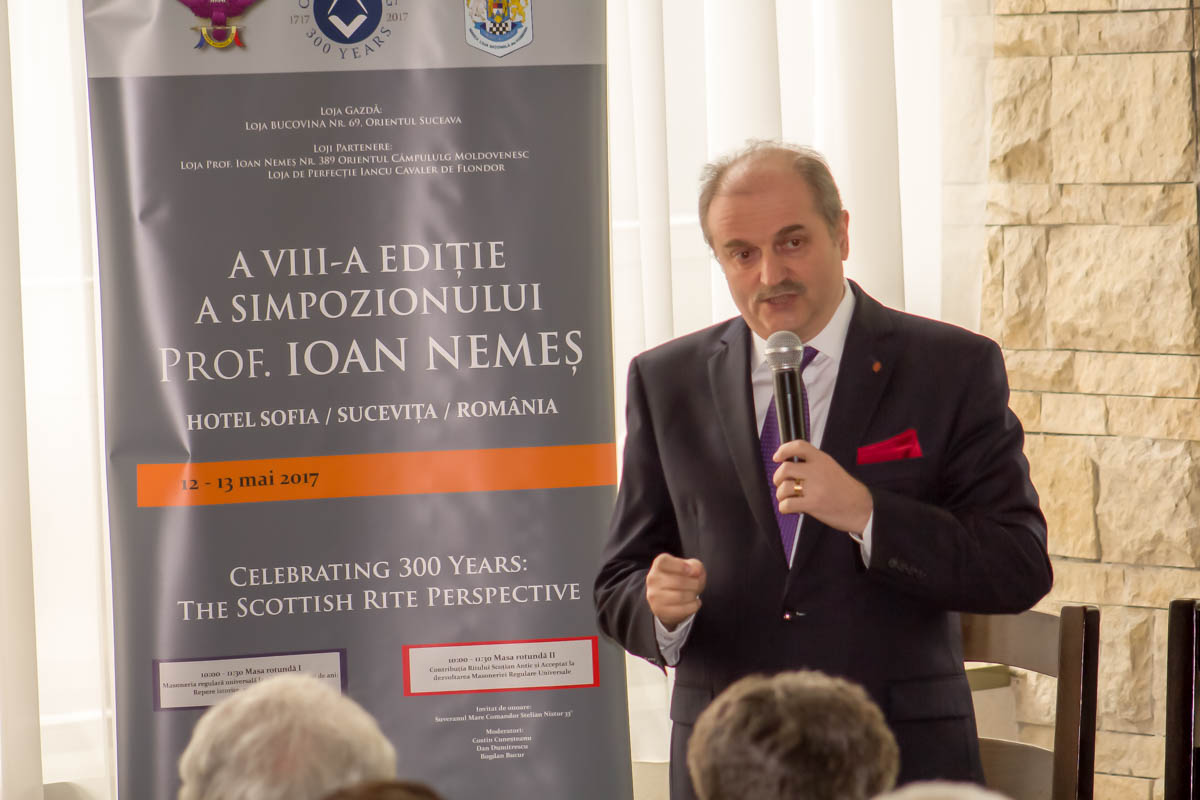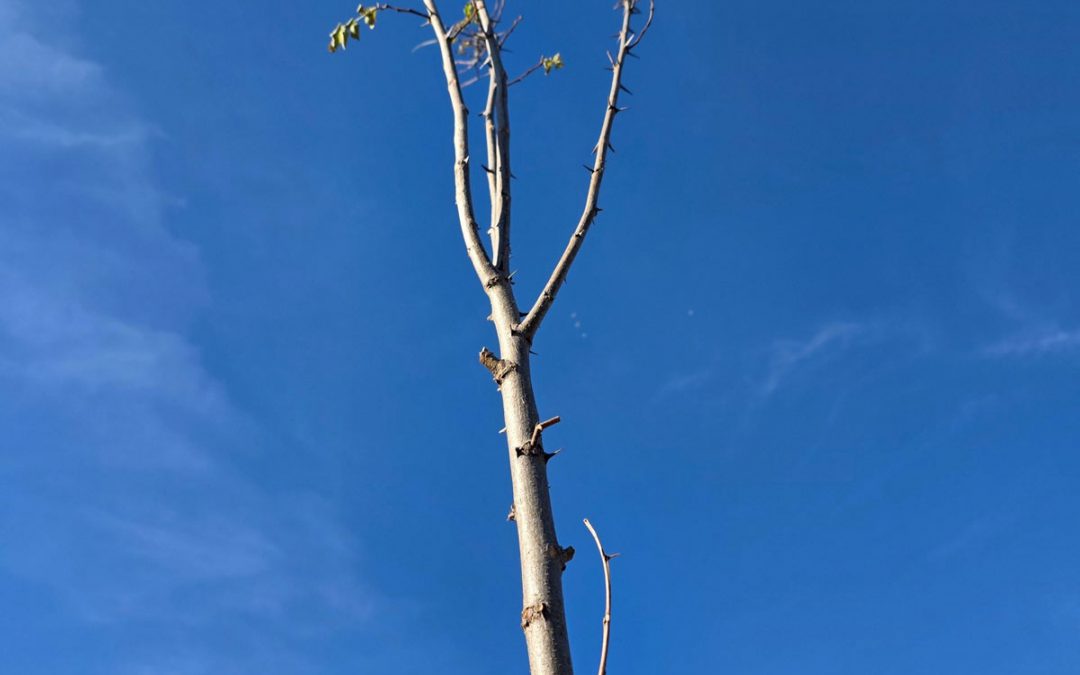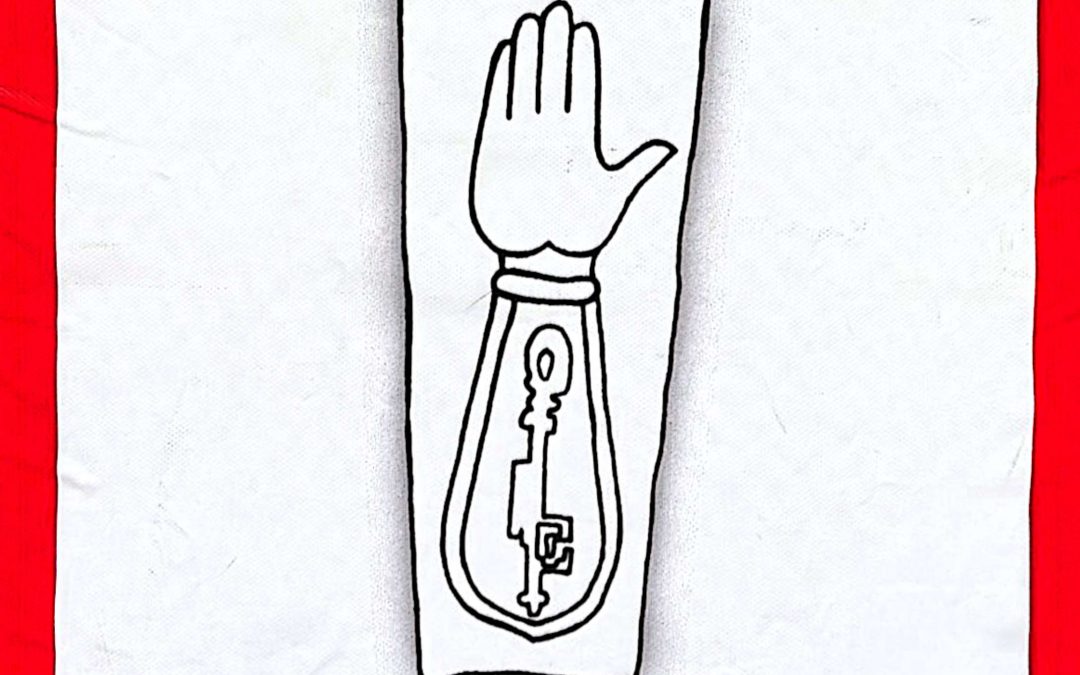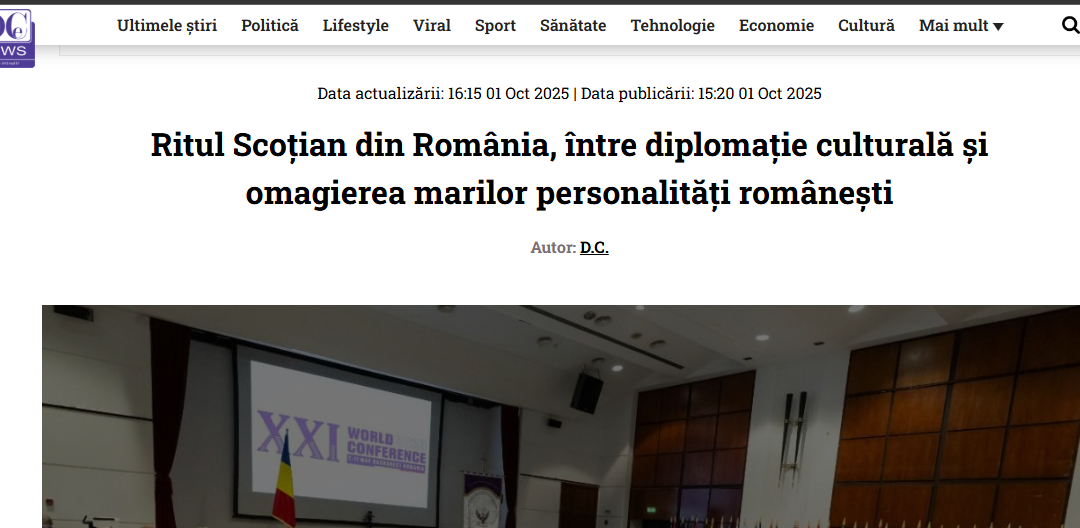CELEBRATING 300 YEARS: THE SCOTTISH RITE PERSPECTIVE - was the theme of the 8th edition of the symposium “Prof. Ioan Nemeș ”, Sucevița, 2017
For those who knew him, they had the privilege of being around him, Ioan Nemeș (1924 - 2009) remains an emblematic figure. It remains, indisputably, Teacher - in the full sense of the word.
As a sign of appreciation, of good and beautiful remembrance, his former "students" - in the School, as well as in the Royal Art - gave his name to a symbolic lodge and a symposium: both, an opportunity to put -moving latencies, to focus energies, to tend towards what - in us - we have better and higher.
Here, then, is that the Symposium “Prof. Ioan Nemeș ”reached the 8th edition - hosted by the“ Bucovina ”Lodge no. 69, Orientul Suceava, in partnership with the lodge „Prof. Ioan Nemeș ”, Orientul Câmpulung Moldovenesc, and the Lodge of Perfection“ Iancu Cavaler de Flondor ”, Orientea Suceava.
Scheduled for two days, May 12 and 13, in the welcoming premises of the elegant Hotel "Sofia" in Sucevita, the symposium was held to celebrate the 300th anniversary of the regular universal Freemasonry - an event considered here from the perspective of the Ancient and Accepted Scottish Rite in Romania.
Thus, this edition is part, in its many aspects, in - increasingly rich, more consistent - the series of cultural events that the Supreme Council of the Rite and its Sovereign Grand Commander conceive and, with the direct contribution of the Brethren, put " in the work ”in a more accurate appreciation of our spiritual treasure .
To those unfamiliar with all this (or, perhaps, passive to them), it would be enough to (re) remind them that Sucevita Monastery it is the last monastic foundation first rank, among those located in the Upper Country of Moldova: so that our location in its vicinity, even if only for two or three days, is not without meaning.
How about Ioan Nemeș, here are four “landmarks” - the most important, but not the only ones - from his rich activity: remarkable educator (he taught 14 years at the “Ștefan cel Mare” High School in Suceava, to which he was a student), famous entomologist with over 80 published studies, he also made the most comprehensive collection of insects in Romania), tenacious protector of Nature and, no less, passionate philatelist (he designed about 500 philatelic stamps and several series of philatelic envelopes illustrated with birds of prey and butterflies )… So, it would be enough for (as N. Iorga would say) “a human life, as it was”.
*
After a "Welcome Word" from the hosts by Eng. Ovidiu Dumitrescu, the Symposium was opened by the Sovereign Grand Commander, the Most Strong and the Illustrious Brother Stelian Nistor 33 °, who reiterated, in strong formulations, not without temptation controversy, the main reasons behind the organization of these "conferences" - generic title, which includes the series of cultural events we just talked about.
Then, "on stage" prof.univ.dr. Theodor Paleologu - at the second meeting with members of the Rite, after the conference "How do we use culture?", Held at the "Metropolis" Theater some time ago.
This time, the theme - excitingly chosen - was aimed Pathologies of Power… We were offered a trip of remarkable intellectual attire, with significant references to Antiquity and / or the Middle Ages, sprinkled with recurring “allusions” to “moderns” (including those who exercised / exercise “power” in post-Romania). December).
Own experience (former ambassador, former minister), vast culture (from family and through personal efforts), irony and self-irony in the accuracy of diagnoses - these are the main "ingredients" of the exhibition, carefully followed and keen interest by those present.
The questions that followed - in fact, brief "points of view" of the participants - turned the debate into a real dialogue, Mr. Paleologu having the condescension to show an interested (and interesting) discussion partner… Discussion so lively that, in the end, we came to the "conclusion" that we should, those interested, meet again with Mr. Paleologist in a dialogue without façon and without time limit; as they say, until the “exhaustion” of the topic and / or of the interlocutors: tempting hypothesis, a sign of the enthusiasm that included the participants.
The evening of the first day ended with a classical music recital, supported by the String Quartet of the “Ciprian Porumbescu” National College of Art from Suceava.
After that we all got together in one Fraternal dinner - pigmented, too, by other short discussions with the guest of the evening.
*
The first half of May 13 "divided" the participants around two "round tables"; two topics of close relevance in the "anniversary moment" under which the Symposium was held:
- “Universal regular Freemasonry on its 300th anniversary. Historical landmarks, evolution and perspectives "-
guest of honor: prof.univ.dr. Cătălin Turliuc; moderately: historians Dr. Gheorghe Bichicean and Dr. Andrei Țăranu - all three, with presentations of real interest to listeners.
- "The Contribution of the Ancient and Accepted Scottish Rite to the Development of Universal Regular Freemasonry" -
guest of honor: PP and IL Brother Stelian Nistor 33 °, Sovereign Grand Commander of the RSAA in Romania
moderately: The illustrious Brothers Costin Cuneșteanu, 33 ° - Lieutenant Grand Commander, and Dan Dumitrescu, 33 ° - Grand Herald, as well as the historian Bogdan Bucur.
The moderators resumed themes set out in the Masonic Training Dress of April 19, while the Word of the Sovereign Grand Commander referred to the "elite status" that should be acquired and assumed by the RSAA in the broader but still "elite" of Freemasonry. .
After a short break, I participated in a second cultural event: Gheorghe Bichicean launched his book entitled, suggestive, Tudor. Under the sign of the Aether (the second volume, after the one dedicated to Horea, which debates controversial issues in the history of Freemasonry in the Romanian Principalities).
The brief presentation made by the author underlined the fact - reported in detail in the book - that, through the movement he prepared and led, Tudor Vladimirescu acted in a historical setting drawn by characters belonging to secret societies: Masonic or paramasonic, revolutionary or just political, these societies marked a period of search, feverish movement of ideas, and action - all for re-establishment on new bases, Nation, of a Europe “shaped” by the Congress of Vienna (1814 - 1815) and ruled by the Holy Alliance: whose main objective was oppression / suppression by force of national aspirations / movements.
After the presentation, Professor Bichicean gave autographs.
Agapa of end, who concluded the Symposium, had a "note of melancholy": partings are never "happy" - but strong points of the two days in Sucevita are sure sign that we will meet again.
*
Two mentions: (1) the total number of participants was approx. 150; (2) the "soul" of the team of "organizers" was Eng. Vasile Mocanu, to whom we also thank in this way.
See you, Bucovina!
- CELEBRATING 300 YEARS: THE SCOTTISH RITE PERSPECTIVE
- CELEBRATING 300 YEARS
- CELEBRATING 300 YEARS: Ambassador Teodor Paleologu
- CELEBRATING 300 YEARS: historian Bogdan Bucur
- CELEBRATING 300 YEARS: Costin Cunesteanu
- CELEBRATING 300 YEARS: Dan Dumitrescu
- CELEBRATING 300 YEARS: Il & PP Fr Stelian Nistor 33, GC
